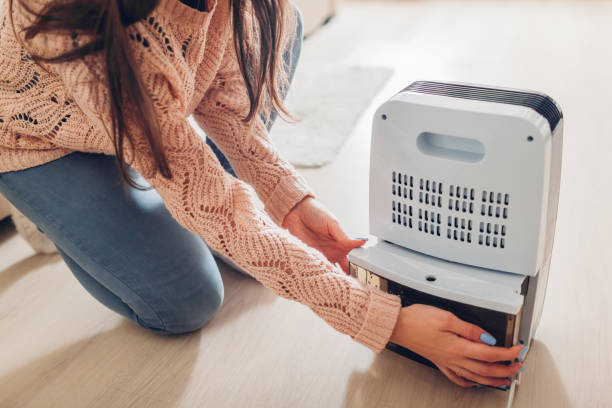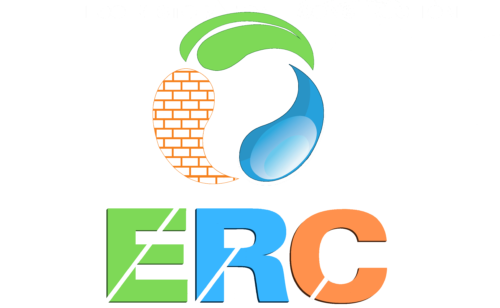Leaks can harm more than just the furniture or materials they penetrate. It can even encourage fungus growth. Dehumidifiers are necessary because of this. Allergic reactions can be mitigated by using a dehumidifier to prevent mold growth.
A commonly asked question is how long should the dehumidifier be left on after a water leak to eliminate the hazards? Commercial dehumidifiers typically need 24 to 48 hours to dry a space completely.
However, the time you need to utilize the dehumidifiers will depend on a few other circumstances. In the event of significant damage, it can take days to weeks to complete the restoration. This article will discuss other factors you need to consider for dehumidifier use. We also added tips on what to look for if you’re planning to buy a dehumidifier.
What is a dehumidifier for?
A dehumidifier draws moisture out of the air, dries it out, and then blows dry air back into space. This can swiftly dry out the drywall when utilized with a fan. This functions by sucking damp air out of a space affected by a leak or flood.
Dehumidifiers rely on a combination of absorption and adsorption to remove moisture from the air. Absorption is the removal of water from a saturated substance. Adsorption is the process that occurs when water is absorbed from a surface.
Hence, to speed up the evaporation process, dehumidifiers work by sucking in humid air and extracting water from it.
Factors that affect the length of use for a dehumidifier
The duration in which you should use a dehumidifier varies per situation. Here are some factors that may come into play:
The extent of area affected
Dehumidifier use might be limited to one day if the water damage is contained to a small area of carpet and wall. However, if the leak impacts the entire home, you may need to run many dehumidifiers for several days, if not a week. The machine functions better in an enclosed space.
To help you gauge the extent of the area affected by the water damage and how much damage was done, assessors can help you with this.
What materials were damaged
You’ll need the dehumidifier for at least a couple of days if the water damages your walls, baseboards, carpets, wood furniture (Pergo), or floors. It is worth noting that the dehumidifier won’t need to run as long as the leaking room’s walls and floor are made of concrete, linoleum, or another less absorbent material.
Air humidity
The relative humidity of the air is another element in determining how long a dehumidifier will need to run. The machine’s useful life may decrease in regions with higher humidity. In addition, because the humidity is higher in the summer, dehumidifiers need to be left on for longer when a water leak occurs than in the winter. Remember that consistently using your dehumidifier in areas with high humidity might impact its performance and longevity.
Ventilation
Keeping all windows and doors shut while running a dehumidifier is recommended. It is because when used in a room with open doors and windows, the dehumidifier will remove moisture from all incoming air and may not function as efficiently as intended.
What to look for when picking a good dehumidifier

Make sure you get the appropriate dehumidifier whether you buy one or rent one. Here are a few things to think about when selecting the best option.
Machine size
Dehumidifiers come in various sizes, and if you don’t select the right one, the moisture may not be removed promptly. You can look through the machines to select one that is big enough for your space.
Tank capacity
Dehumidifiers turn off when the tank is full. You might need to get a dehumidifier with a larger tank if you intend to leave it running while you are away from home. However, you will have to empty the tank more frequently, the smaller it is.
Cost and budget
When trying to dry up your flooring, you might be on a tight budget and searching for a dehumidifier that fits within your price range. You may compare prices and choose the best option or lease one.
Sound level
Dehumidifiers can sometimes be noisy. However, some models have settings for quiet mode. You must consider it, especially if you plan to use it at bedtime.
Tips when using a dehumidifier
To maximize the performance of your dehumidifier, here are some tips that could be helpful.
Keep doors and windows shut
Keep windows and doors closed at all times to stop outside humidity from leaking inside and damaging your dehumidifier.
Make sure you use the right dehumidifier
A dehumidifier extracts water effectively, speeding up the drying process in your space. The dehumidifier you use depends on how damp your home is. To do this, check your home’s temperature and humidity levels. Based on your assessment, pick the appropriate dehumidifier. Strong commercial dehumidifiers are required for serious water damage.
Get rid of objects with water damage
Take out any household products that have water damage. Doing this will stop your home products from absorbing extra water.
Frequently asked questions
Is it okay to use the dehumidifier 24/7?
If you take care of your dehumidifier, it will last very long. Make sure to fill the tank only once and keep it clean.
How much liquid can a dehumidifier remove?
Three particular elements will determine the solution to this. The dehumidifier’s output, the temperature of the space, and the air’s relative humidity. In a single 24-hour period, a 12-liter dehumidifier will eliminate 12 liters of moisture. The dehumidifier must only run occasionally to maintain the desired relative humidity level once it has been reached, as this will result in less water being collected in the bucket.
Can I remove water from the walls using a dehumidifier?
Even if there is no visible water damage, walls can get saturated with water. With this, a dehumidifier can help swiftly dry out walls by removing water. This device draws out damp air from the space, evaporates the moisture, and releases dry air.
Conclusion
If water damage is not properly cleaned up, it could result in expensive damage to your house. Even a little water leak can cause drywall and flooring damage and mold development that needs substantial cleaning. The fastest solution to this issue is quickly drying the affected area. Dehumidifiers are, therefore, the most efficient method of drying water damage. It assists in minimizing or preventing damages that could result from water damage.
Dehumidifiers are essential for maximizing drying effectiveness and reducing damage. However, since every case is unique and depends on several variables, there is no set period for how long you should operate a dehumidifier following a water leak. The suggested usage period, though, is between 24 and 48 hours.






